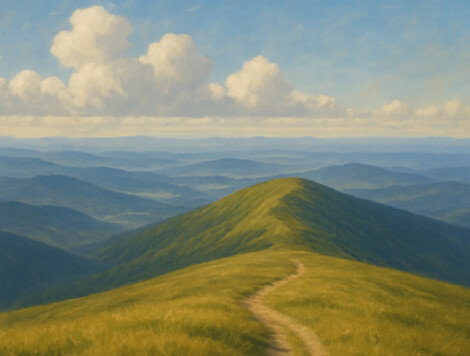Horyzont
I was supposed to see the mountains for the first time at the age of six, when my father took me to a trip to Barania Góra. With his cousin, who had just come back from the army. But I didn’t see the mountains, because there was fog. Gray, thick, and heavy. What struck me deeply was my father’s remark that we were walking inside a cloud, because such fog is a cloud that has descended to the ground.
I saw the mountains for the first time six years later, when my mother took me on a trip to Wielka Racza. With her high school class, of which she was the supervising teacher. I was overwhelmed. By everything—the long hike that ended at a shelter at midnight, the loud and cheerful group of people only six years older than me but already adults, constantly talking with one another, and most of all by the landscape. It’s hard to say what exactly in that landscape. Perhaps the way a vertical dimension suddenly revealed itself there, on a scale far beyond the size of a human being, yet understandable through the time necessary to reach a distant but visible point at the mountain’s summit. And conversely, through the breadth of the horizon visible from the peak. Not metaphysics, but rather the opposite—an embodied geometry, or topography, reorienting a person on an existential level. I was equally awestruck a little later, when I looked at the moon through binoculars and fully realized that the edge of the shadow on its disk was the shape of the Earth.
I also remembered that I must have seen the mountains for the first time when I was three, when my grandmother took me for a week to Ustroń. But from that, I remember only a car standing by the street with huge, chrome-plated headlights.


